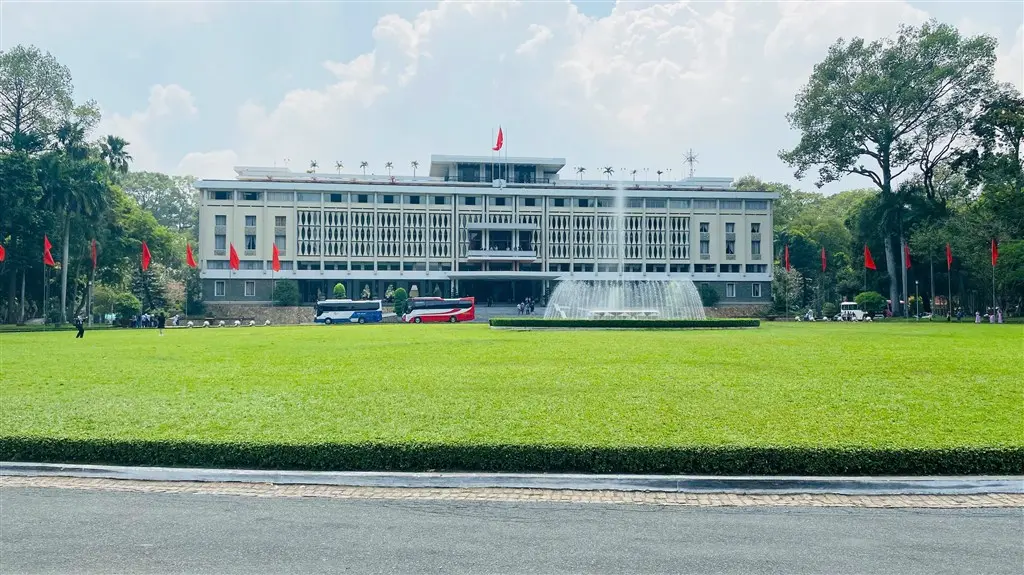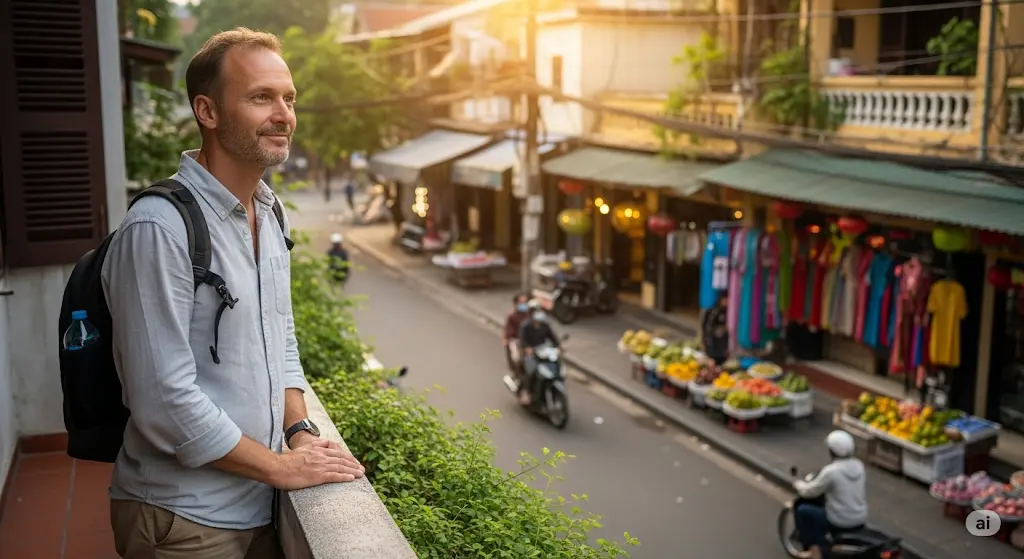Welcome to EssentialVietNamtravel.com, your trusted companion for navigating the wonders of Vietnam. Today, we delve into one of the most rewarding ways to experience this beautiful country: the Vietnam train system. Travelling by vietnam train offers a unique perspective, allowing you to witness stunning landscapes, immerse yourself in local life, and journey affordably between key destinations. This comprehensive guide will equip you with everything you need to plan your Vietnam by rail adventure, from booking vietnam train tickets to understanding the onboard experience.
The Vietnam railway network, particularly the iconic Reunification Express, is more than just public transport in Vietnam; it’s a rolling window into the heart and soul of the nation. Whether you are a seasoned backpacker exploring Southeast Asia travel or a tourist seeking authentic cultural encounters, train travel in vietnam provides an unparalleled experience. Forget the rush of vietnam air travel for a moment and consider the charm of the railway track unfolding before you.
Your Guide to Vietnam Train Tickets and Schedules: Planning Your Journey

Planning your vietnam train trip starts with understanding how to secure your tickets and decipher the schedule. This process is straightforward once you know the options. EssentialVietNamtravel.com is here to guide you through each step, ensuring you can book Vietnam train tickets with confidence.
Book Your Vietnam Train Tickets the Easy Way
For a hassle-free experience, especially for international travelers, we recommend using a trusted online platform. They offer user-friendly interfaces in English and accept international payment methods.
First, consider where and how to purchase your train ticket. You have several choices. The most direct method is often through the official Vietnam Railways website. This platform provides up-to-date schedules and allows for online booking. However, the interface can sometimes be challenging for international visitors. Another popular option is using reputable third-party online travel agencies that specialize in Southeast Asia travel, such as Baolau or 12Go Asia. These sites often have more user-friendly interfaces in English and accept various international payment methods.
They may charge a small commission, but many travelers find the convenience worthwhile for Vietnam train tickets online booking. Finally, you can purchase tickets directly at any major vietnam train station. This is suitable if you are flexible with your travel dates or prefer in-person transactions, but be aware that popular routes and sleeper berths can sell out, especially during peak seasons or holidays like Tet. For foreigners wondering how to book Vietnam train for foreigners, online agencies are often the simplest route.
When booking, you will need to provide passenger details, typically including full names as per your passport and sometimes passport numbers. For online booking, payment is usually made by credit card. After successful payment, you will receive an e-ticket via email. It is crucial to print this e-ticket or have it readily available on your mobile device, as you will need to present it before boarding and often to the conductor during the journey.
Understanding the train schedule is key. Timetables are published online and at stations. Look for your departure city (e.g., Hanoi, Ho Chi Minh City) and arrival city. Train services are usually identified by a code (e.g., SE1, TN2). The schedule will clearly indicate departure and arrival times. Pay attention to these, as some long-distance train journey vietnam can span overnight. The Reunification Express, for example, offers several departures daily connecting major cities.
You will also need to choose your class of travel. Vietnamese trains typically offer:
- Hard Seats: The most basic and cheapest option, suitable for short journeys. These are wooden or minimally padded benches.
- Soft Seats: More comfortable, with cushioned, reclining seats, often in air-conditioned carriages. Good for daytime journeys of a few hours.
- Hard Sleeper (6-berth cabin): Cabins with six bunks (three on each side). Bedding is provided. A more budget-friendly sleeper option.
- Soft Sleeper (4-berth cabin): More spacious cabins with four softer bunks (two on each side), bedding, and often a small table. These are the most comfortable for an overnight train Vietnam experience. Some routes might also feature luxury tourist carriages operated by private companies, offering enhanced comfort and service at a higher price.
EssentialVietNamtravel.com recommends booking your vietnam train tickets in advance, especially if you plan to travel on popular routes like Hanoi to Da Nang or the full North-South Reunification line, or if you require a sleeper berth. This is particularly important during Vietnamese holidays and the peak tourist season.
Exploring Major Vietnam Train Routes: From Hanoi to Ho Chi Minh City and Scenic Journeys
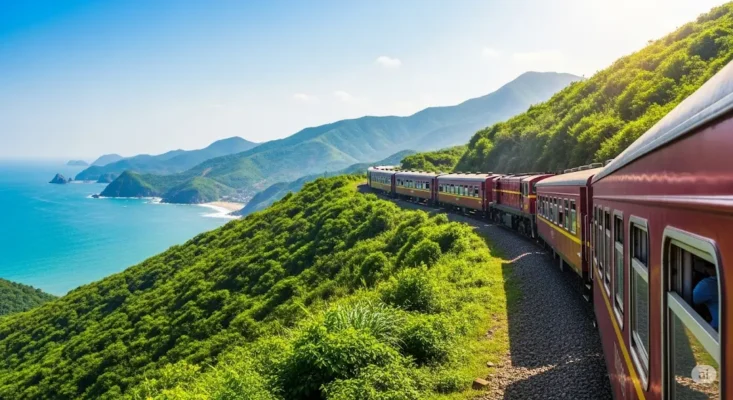
The Vietnam railway network stretches across the country, but a few routes stand out for their popularity and scenic beauty. Knowing these routes helps you plan an itinerary that matches your interests and time. The Vietnam transportation network via rail allows for deep exploration.
The most famous route is undoubtedly the Reunification Express, which runs the length of the country along the North-South Reunification line. This historic track connects Hanoi in the north with Ho Chi Minh City (formerly Saigon) in the south, covering over 1,700 kilometers. A journey on the Reunification Express is more than just travel; it’s an experience, offering glimpses into Vietnam’s diverse landscapes, from bustling cities to tranquil countryside, rice paddies, and stunning coastlines.
Key stops along this route include Vinh, Dong Hoi, Hue, Da Nang, Quy Nhon, and Nha Trang, making it easy to break up the journey and explore different regions. The Hanoi to Ho Chi Minh City train cost varies depending on the class of travel and the specific train, but it remains an affordable long-distance option compared to other modes of transport for such a distance.
One of the highlights and arguably the best train ride in vietnam is the section of the Reunification Express that traverses the Hai Van Pass.
The Iconic Hai Van Pass Route
The Hai Van Pass scenic route, meaning “Ocean Cloud Pass,” offers some of the most breathtaking views on the entire Vietnam railway system. This stretch typically runs between Hue and Da Nang. As the train winds its way up and around the mountainside, passengers are treated to panoramic vistas of the turquoise East Sea on one side and lush, jungle-clad mountains on the other. The railway track here hugs the coastline, offering dramatic cliffside views and glimpses of secluded beaches and lagoons.
For photographers and nature lovers, this part of the train journey vietnam is an absolute must. Many travelers specifically choose daytime trains for this segment to fully appreciate the scenic views. The journey through the Hai Van Pass is a significant reason why many opt for vietnam by train, as roads now often use a tunnel, bypassing these spectacular sights. This specific experience makes train travel in Vietnam truly special.
Beyond the main North-South line, other notable routes include the train from Hanoi to Lao Cai, which is the gateway to the mountainous region of Sapa, famous for its terraced rice fields and ethnic minority cultures. Shorter routes connect major cities to nearby attractions, offering alternatives to vietnam bus travel for regional exploration. When planning, consider which route connects cities you wish to visit. Understanding the route network allows for flexible Vietnam travel planning. Many find these scenic railway journeys a core part of their Southeast Asia backpacking adventure.
The Reunification Express Experience: A Classic Vietnam Railway Adventure
Embarking on a journey aboard the Reunification Express is to partake in a living piece of Vietnamese history and culture. This legendary train vietnam service connects the nation, and riding it offers an authentic slice of life that you simply cannot get from faster modes of transport. EssentialVietNamtravel.com believes this is a cornerstone of any comprehensive Vietnam tourism experience.
The Reunification Express is not a single, named luxury train in the Western sense, but rather a designation for the collective of trains (SE1, SE2, SE3, SE4, etc.) that ply the North-South route. What makes this vietnam railway journey special is its historical significance, linking the once-divided nation, and the sheer diversity of the landscapes it traverses. A full trip from Hanoi to Ho Chi Minh City can take around 30 to 35 hours, making it a significant vietnam train trip.
Life onboard the Reunification Express varies depending on your chosen class, but a common thread is the opportunity for cultural interaction with locals. Many Vietnamese families use the train for long-distance travel, and sharing a sleeper cabin or a seating area can lead to friendly conversations, shared snacks, and a deeper understanding of daily life. This is where the vietnam by rail experience truly shines.
For an overnight train Vietnam journey, a sleeper berth is highly recommended. Soft sleepers offer more comfort and privacy, while hard sleepers are more communal. Regardless, the rhythmic clatter of the train on the railway track becomes a soothing backdrop to the unfolding scenery. Food and drink are available. Attendants often pass through with trolleys selling snacks, instant noodles, coffee, and cold drinks. At major station stops, vendors on the platform may offer local specialties – be quick if you decide to buy, as stops can be brief. Some trains also have a basic dining car where you can get simple hot meals. Many travelers also bring their own provisions.
The charm of the Reunification Express lies in its unhurried pace. It allows you to watch the world go by, to see Vietnam’s landscapes transition from urban sprawl to rural tranquility, from coastal plains to mountainous interiors. It’s a chance to disconnect, read a book, chat with fellow passengers, or simply gaze out the window. This train journey vietnam is less about the destination and more about the travel itself.
Understanding Your Train Journey Vietnam: Onboard Comfort and the Overnight Train Vietnam Experience
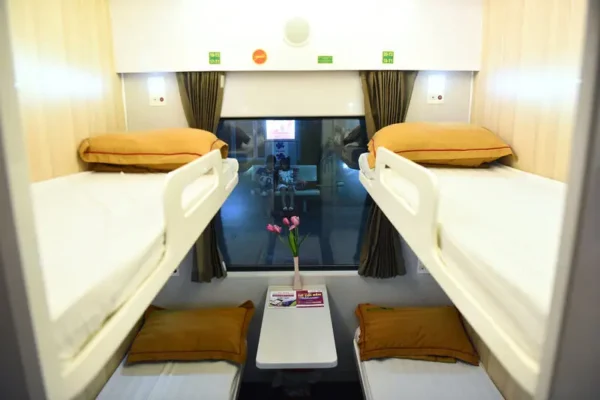
To make the most of your vietnam train travel, it’s helpful to understand the different levels of comfort and what to expect, especially for an overnight train vietnam journey. The type of train carriage you choose will significantly impact your experience.
The Vietnam train system offers various carriage types to suit different budgets and preferences. Air conditioning is common in soft seat and most sleeper carriages, which is a welcome relief in Vietnam’s tropical climate. Power outlets for charging devices are sometimes available, usually in soft sleeper cabins or newer soft seat carriages, but it’s wise to bring a fully charged power bank as a backup. Luggage storage space is available, typically under seats or in overhead racks for seated carriages, and under the lower bunks or in designated spaces in sleeper cabins. The standard luggage allowance is generally around 20kg per passenger, but this is rarely strictly enforced for carry-on style baggage.
Sleeper Cabins: Soft vs. Hard Berth
For any long-distance or overnight train vietnam trip, a sleeper berth is the preferred choice for comfort.
Soft Sleeper: These cabins typically contain four berths – two upper and two lower – and are the most comfortable option on Vietnamese trains. Bedding (a pillow, sheet, and blanket) is provided. The door to the cabin can usually be locked from the inside, offering more privacy and security. There’s often a small table and reading lights. This is ideal for families or small groups traveling together. The journey duration is made more pleasant with this comfort level.
Hard Sleeper: These cabins have six berths – three on each side (lower, middle, upper). While the mattresses are thinner than in soft sleepers, bedding is still provided. Hard sleeper cabins are more open and communal, offering less privacy but often a more social atmosphere. They are a good budget-friendly option for experiencing an overnight train. The ticket price for a hard sleeper is lower than a soft sleeper.
Seating Options: Soft Seats vs. Hard Seats
For shorter daytime journeys, a seat might be sufficient.
Soft Seats: These are cushioned, often reclinable seats, arranged in a 2-2 configuration, similar to what you might find on a bus or airplane. They are generally air-conditioned and comfortable for journeys up to several hours. This is a popular choice for routes like Hue to Da Nang if you’re not traveling overnight.Hard Seats: This is the most basic and economical option. Seats are typically wooden or very thinly padded benches. Carriages may or may not have air conditioning and can get crowded. Hard seats are suitable for very short trips or for travelers on a tight budget who want a truly local experience, though comfort level is minimal for any significant journey duration.
Toilets are available at the end of most carriages. The cleanliness can vary, so it’s advisable to bring your own hand sanitizer and toilet paper, just in case. Onboard amenities are generally basic but functional, focusing on the primary purpose of transportation mode. The experience offers a unique cultural immersion.
Key Vietnam Railway Stations: Navigating Your Departure and Arrival with Vietnam Railways
Knowing your way around key vietnam train station locations can make your journey smoother. Major cities have well-established stations, though facilities can vary. EssentialVietNamtravel.com provides this overview of what to expect at the main hubs serviced by Vietnam Railways.
Most stations will have a main hall with ticket counters, waiting areas, and departure boards displaying train schedules. It’s advisable to arrive at the railway station at least 30-60 minutes before your scheduled departure to allow time to find your platform and carriage. Your train ticket will usually indicate your carriage number and seat/berth number. Station staff or fellow passengers can often help if you’re unsure where to go. Remember, fixed routes exist, and your ticket implies journey on a specific one.
Hanoi Railway Station (Ga Ha Noi)
Hanoi Railway Station, located in Hanoi City at 120 Le Duan Street, Hoan Kiem District, is one of the country’s largest and busiest stations. It serves as the main northern terminus for the Reunification Express and trains heading north. Important Note: Hanoi Station has two distinct sides. The main entrance on Le Duan Street (often called Station A) serves trains heading south (e.g., to Hue, Da Nang, Ho Chi Minh City).
A smaller entrance on Tran Quy Cap Street (Station B) serves trains heading north and west (e.g., to Lao Cai for Sapa, Lang Son, Hai Phong). Double-check which side your train departs from. Facilities include ticket offices, waiting rooms, some food stalls, and restrooms. The location is central, making it relatively easy to reach by taxi or public transport.
Saigon Railway Station (Ga Sai Gon) in Ho Chi Minh City
Saigon Railway Station is the southern terminus for the Reunification Express, located in District 3 of Ho Chi Minh City at 01 Nguyen Thong Street. It’s a large, relatively modern station. Facilities are similar to Hanoi, with ample waiting areas, ticket counters, electronic departure boards, food and beverage outlets, and ATMs. Taxis are readily available outside for onward travel. The location is a bit outside the main tourist center (District 1), so factor in travel time to reach it. This station is crucial for anyone planning a train system vietnam journey starting or ending in the south.
Other important stations on the Vietnam railway system include Da Nang Railway Station, centrally located and a key stop for accessing Hoi An and the Hai Van Pass; Hue Railway Station, serving the former imperial capital; and Nha Trang Railway Station, popular for beach access. Smaller stations will have more basic facilities. The schedule determines departure, so always verify your train’s platform.
Essential Tips for Travelling by Vietnam Rail Transport as a Passenger
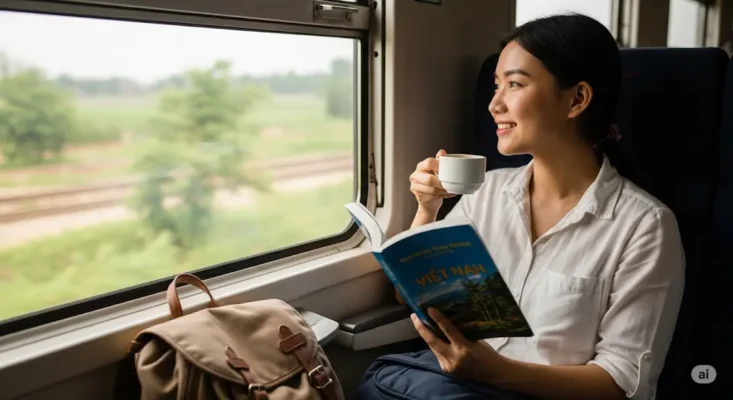
To ensure your vietnam train trip is enjoyable and hassle-free, EssentialVietNamtravel.com has compiled some practical tips. Travelling by vietnam rail transport offers a unique way to see the country, and a little preparation goes a long way.
Safety and Security: While trains in vietnam are generally safe, it’s always wise to be mindful of your belongings. Keep valuables secure and out of sight, especially in crowded areas or when sleeping. Lock your sleeper cabin door from the inside if possible. Don’t leave bags unattended on platforms.
What to Pack for Your Vietnam Train Journey:
- Comfort Items: For sleeper trains, consider bringing a travel pillow, earplugs, and an eye mask to improve sleep quality.
- Snacks and Drinks: While some food is available, having your own preferred snacks and a water bottle is a good idea.
- Toiletries: A small toiletry kit with hand sanitizer, wet wipes, and your own toilet paper can be very useful.
- Entertainment: Books, music, downloaded movies, or a journal can help pass the time on longer journeys.
- Chargers: A portable power bank is highly recommended as power outlets can be scarce or unreliable.
- Layers: Even with air conditioning, carriages can sometimes be cool, so a light jacket or sarong can be useful.
Food and Drink: As mentioned, food carts pass through carriages, and some trains have dining cars offering simple Vietnamese dishes. Platform vendors at station stops provide more variety, but you need to be quick. For a wider selection and to cater to dietary preferences, bringing some ofyour own food is a good strategy.
Interacting with Staff and Locals: Train staff are generally helpful. Learning a few basic Vietnamese phrases like “Xin chào” (Hello) and “Cảm ơn” (Thank you) can enhance interactions. Fellow passengers are often friendly, and sharing your journey with locals is part of the rich cultural interaction with locals that train travel vietnam offers.
Managing Luggage: The typical luggage allowance is around 20kg per passenger, though this is often flexible for reasonable amounts. Store larger bags under lower bunks or in designated overhead racks. Keep essentials and valuables in a smaller daypack with you.
Dealing with Delays: The Vietnam train system, while generally reliable, can sometimes experience delays. It’s wise to build some flexibility into your travel schedule, especially if you have onward connections.
Cost Efficiency: Vietnam by train is an affordable long-distance option. To compare Vietnam train prices, check different classes and book in advance for potentially better deals. Hard seats are the cheapest, while soft sleepers are the most expensive but offer the best comfort for an overnight train.
Alternatives and When to Choose Rail: While vietnam bus travel can be cheaper for some routes and vietnam air travel is faster for long distances, the vietnam train offers a unique blend of scenic views, comfort (especially in sleepers), and cultural immersion that other modes lack. For journeys like the Hai Van Pass scenic route or the full North-South experience, the train is unparalleled. It’s a method for country traversal that allows you to truly see Vietnam.
Pet Carriage Policy & Bicycle Transport: Generally, pets are not officially allowed on Vietnamese trains, though small animals discreetly carried might sometimes be overlooked (this is risky). Transporting bicycles can be arranged, usually in the freight car, for an additional fee and requires some advance coordination at the station. Limited accessibility features mean passengers with mobility issues should inquire in advance about assistance.
Trains are operational in Vietnam, providing a vital link in the Vietnamese transportation network. Tickets are necessary for travel, and published timetables help you plan. EssentialVietNamtravel.com hopes these tips help you confidently plan and enjoy your train adventures in this captivating country. The experience of a vietnam train trip is one you won’t soon forget, offering a deeper connection to the land and its people. Consider it a vital part of your Vietnam travel planning for an authentic slice of Southeast Asia backpacking.

